20th Anniversary of the Revolution, 19.August 1965, Two stamps in the nominals of 6xu and 12 xu were issued in perforation 11.0. The 6xu value was intended for postcards and the 12xu value for the standard domestic letter rate. Michel Nr. 385-386;
Here is the mint set.
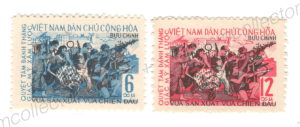
These stamps were not officially released imperforate, however, a very small number of imperforate trial proofs have come to market. Here is the imperforate set with large sheet margins.

Letter mailed to Theo Klewitz in October of 1965 featuring the set. The overall franking amount to 64 xu which is in excess of the required standard letter rate to West Germany of 50 xu.
Here is a true piece of history. It is a combat cover (sometimes also referred as a bullet-hole cover) that was taken by either an ARV or an American soldier after wounding or killing a North Vietnamese mail man. Each side in the conflict was trying to gain an advantage by securing intelligence from the enemy so mail personell were a valuable target. It was a requirement that all mail taken in combat was to be handed over to the intelligence branch for translation and analysis which makes this type of mail so rare these days. So, most of these covers ended up in the files of the CIA or were destroyed after analysis. It was illegal to retain them, especially the letters inside, but some service men nevertheless kept some envelopes as war trophies. This cover clearly shows the marks of bullet holes or shrapnel damage that was inflicted in the fight. The letter was addressed to a member of the military as indicated by the Hop Thu Nr. on front. The number is associated with a medical training school and the reference “B.S.” likely stands for Bac Si (Medical Doctor). The envelope is a typical adversity cover that was fashioned out of old note paper. The envelope is from 1967. Very rare!
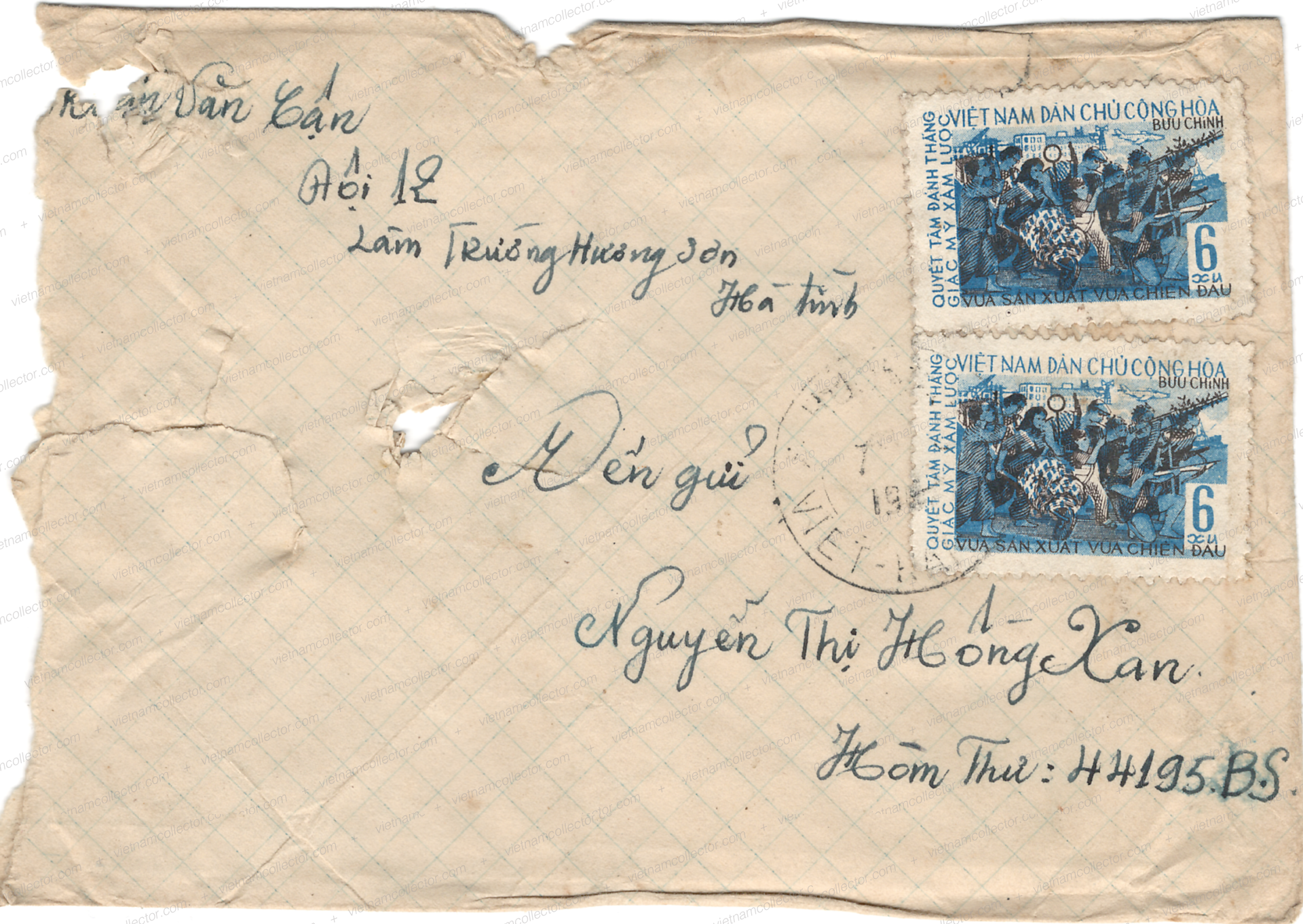
Very rare single franking of the 6xu value on a local letter using the reduced intra-city tariff. Gia Lam is a suburb of Hanoi. Hanoi machine cancel from April, 1966. Illegible arrival cancel on the reverse.
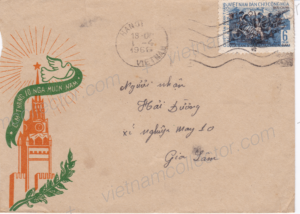
Rare single franking of the 6xu value on a postcard from March of 1966 sent to Prague, Czechoslovakia. Very few domestic or international postcards survive so this is a pretty hard to find mailing.
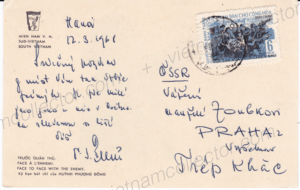
Very rare multiple franking of the 6 xu value on a local letter to Cut Bao Tang mailed in July of 1973. The right stamp is damaged but nevertheless a very hard to find item. Most local letters were destroyed in the multi-decadal war, destroyed by the tropical climate or by recycling due to raw material shortages.
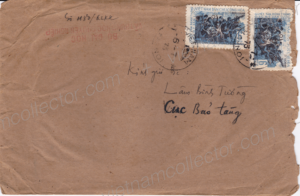
Multiple franking of the 6xu value paying the 12xu postage for a letter to Poland from 1967. Warsaw arrival cancel on the reverse.
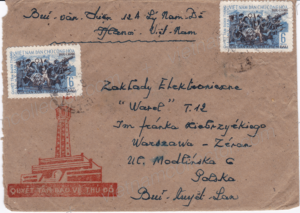
Mixed franking of the 6xu value together with the 12 xu HCM Speech stamp for an overall postage of 18xu. Since the standard 20g letter rate to Hungary was only 12xu this letter must have been heavier than the standard weight.
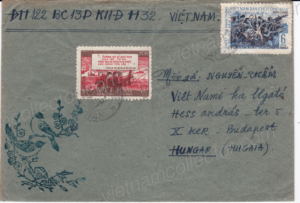
Here is a true piece of history. It is a combat cover (sometimes also referred as a bullet-hole cover) that was taken by either an ARV or an American soldier after wounding or killing a North Vietnamese mail man. Each side in the conflict was trying to gain an advantage by securing intelligence from the enemy so mail personell were a valuable target. It was a requirement that all mail taken in combat was to be handed over to the intelligence branch for translation and analysis which makes this type of mail so rare these days. So, most of these covers ended up in the files of the CIA or were destroyed after analysis. It was illegal to retain them, especially the letters inside, but some service men nevertheless kept some envelopes as war trophies. This cover clearly shows the marks of bullet holes or shrapnel damage that was inflicted in the fight. The letter was addressed to another military unit as indicated by the Hom Thu Nr. on front. The envelope is a typical adversity cover that was fashioned out of old note paper. The letter was mailed in Yen-Bai a town North-West of Hanoi. It contains a letter that, when folded, lines up perfectly with the bullet holes. It was sent from a woman to her brother. She recites the places her brother recently visited with his unit, the storm he endured while en route. She also left plenty of hints who had been killed in the conflict, such and such person had joined another one who was known “killed in action”. One interesting piece of information is that all boys in her family had already left home to fight in the South with the youngest one just got drafted and was on his way to Saigon to possibly to join with an older brother there. The letters date the cover from November, 1967. Very rare!
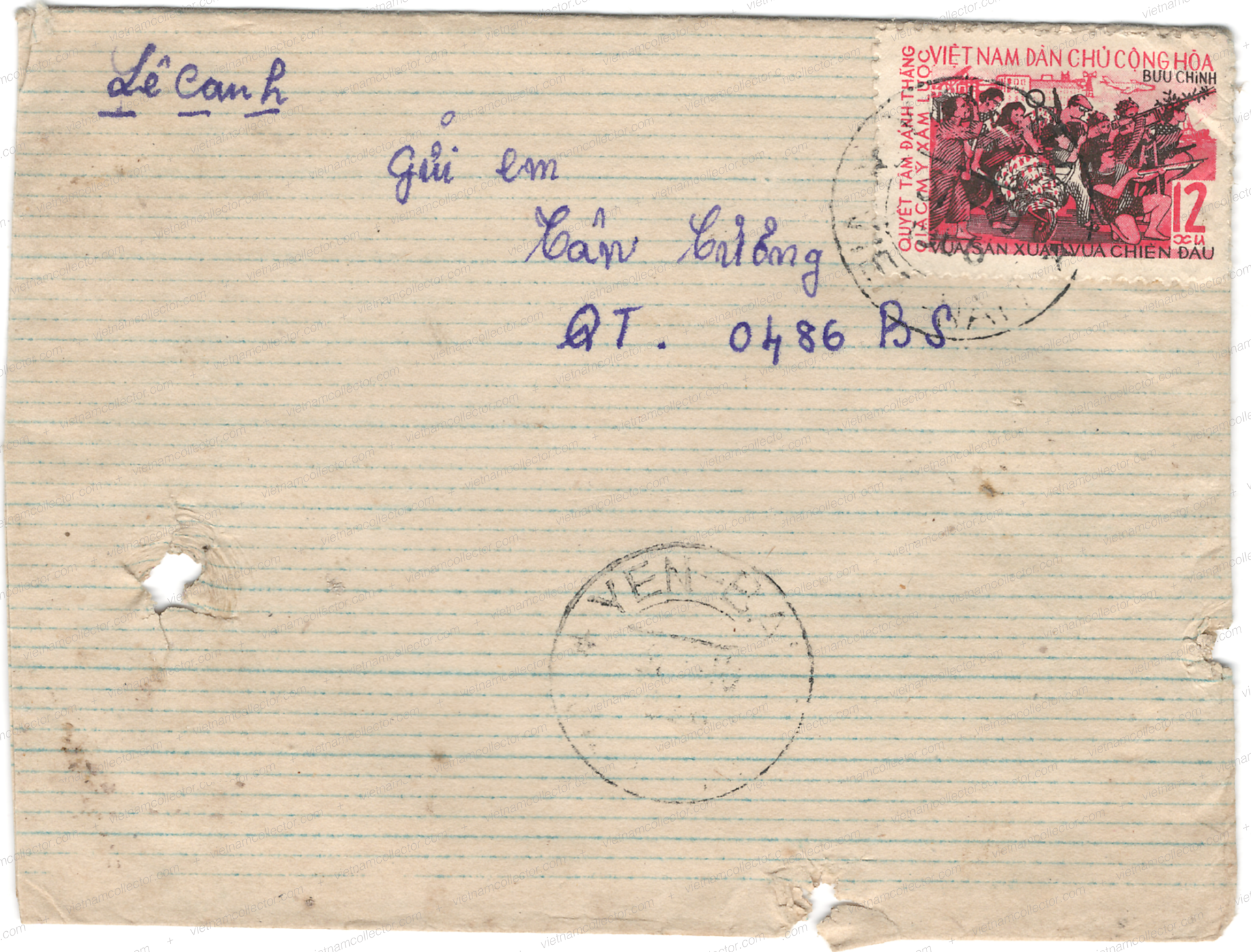
Very rare single franking of the 12xu value on a local letter sent to a member of the armed forces (as can be seen by the Hom Thu Nr. part of the address line). Cancelled by Hanoi machine cancel. Most local letters got lost in the decades long war, were destroyed by the tropical climate or recycled due to raw material shortages.
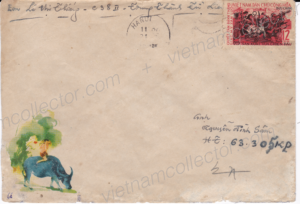
Another very rare single franking of the 12xu value on a local letter (full content preserved).
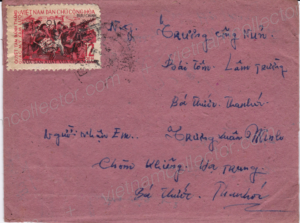
Here is a similar franking but in this case the letter is sent internationally from Tho Xuan (small post office) to Budapest, Hungary in March of 1966. This documents nicely that the domestic letter rate was identical to the international letter rate if sent to a fellow socialist country.
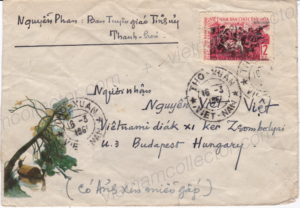
Rare multiple franking of the 12 xu value on a letter sent from Thanh Hoa to Budapest, Hungary. Since the tariff up to 20g was only 12xu this letter must have been of the second weight level.
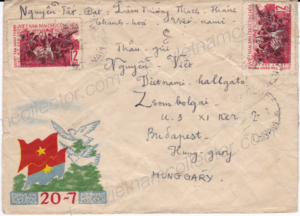
Mixed franking of the 12xu Anniversary of the Revolution stamps (3) together with the 2xu Cultural Development and 8xu Birthday of Lenin stamps paying an overall postage of 46xu on an international air mail printed matter sent from Hanoi to East Germany in February of 1967.
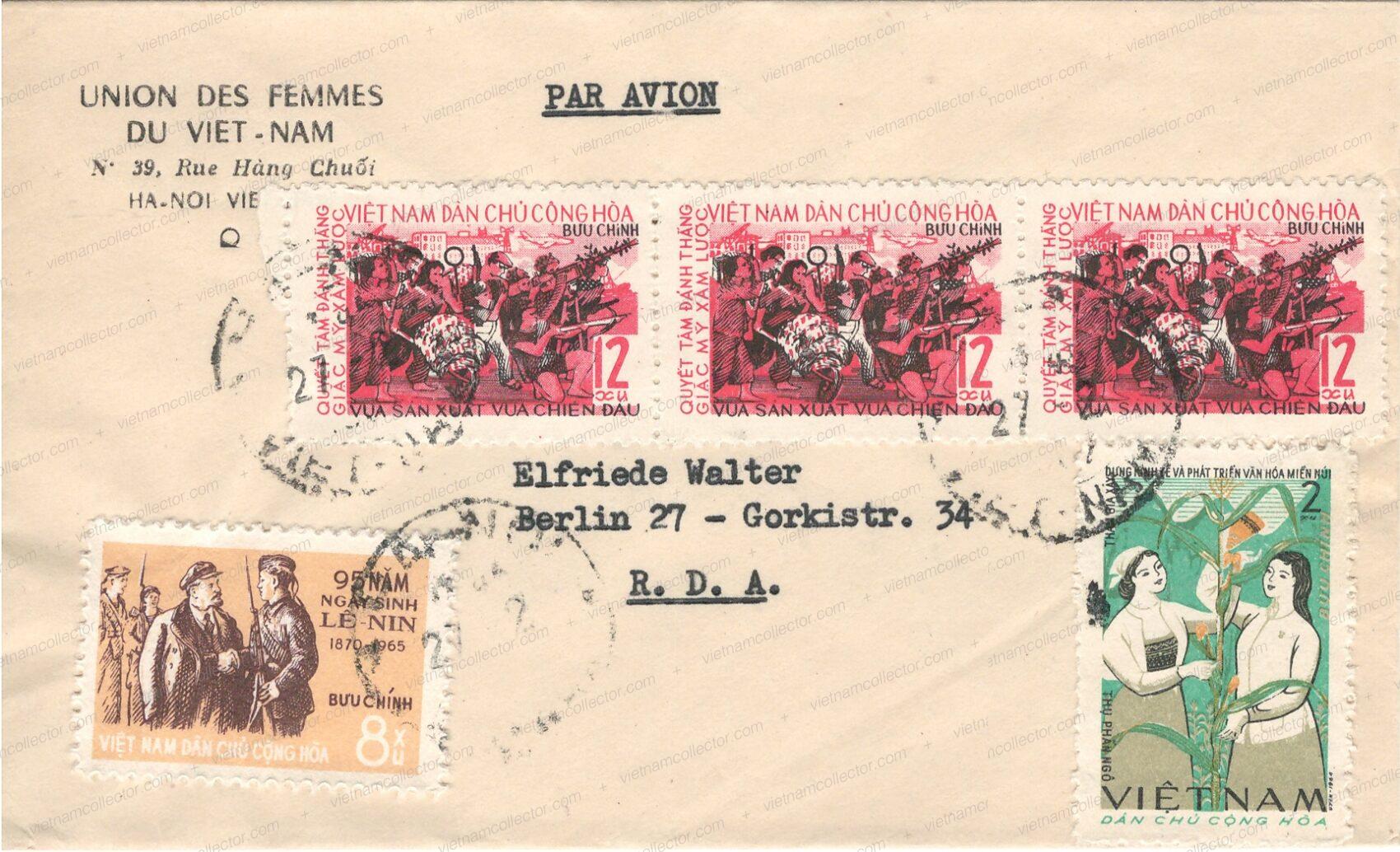
Air mail letter sent from Hanoi to a State owned company in East Germany from November of 1965. The letter carries a mixed franking (including the 12xu Butterfly stamp) for an overall postage of 38xu. Since the standard letter rate to East germany in 1965 was only 12xu (up to 20g) this letter must have been heavier than the standard.
Mixed franking of a pair of 1xu NLF stamp together with the 50xu Geneva Convention stamp and three of the 6xu values of the Anniversary of the Revolution set for an overall postage of 70xu on an air mail letter to Stockholm, Sweden. Sweden was a rare destination.
Here is the same franking but this time on a letter to the Soviet Union. The envelope probably contained a post or greeting card so was left open for postal inspection. The postcard rate to the Soviet Union was only 6xu so the sender mistakenly used the Western postcard rate instead.
Postcard with a mixed franking of the 40xu Bird stamp plus the 6xu Anniversary of the Revolution stamp for an overall postage of 46xu. 46xu was the required postcard rate to Western countries as of March 1st, 1960. For Hungary, being a socialist country in 1968 the 6 xu Eastern postcard tariff would have sufficed but it appears the writer was not aware of that.
Mixed franking of the 40xu Animal set value together with the 6xu Anniversary of the Revolution stamp paying 46xu postage.
Mixed franking sent to the Director of a State owned enterprise in East Germany featuring, among others, the 20xu Harmful Insects stamp.
Mixed franking using the second 12 xu Dimitoff stamp plus one 6 xu 20 Years revolution stamp and paying an overall tariff of 18 xu on a large international envelope sent from Hanoi to Sweden in August of 1973. Since the standard international letter rate to Western countries was already 50 xu in 1973 the mailing most likely represents a printed matter that carries a much reduced rate. Rare.
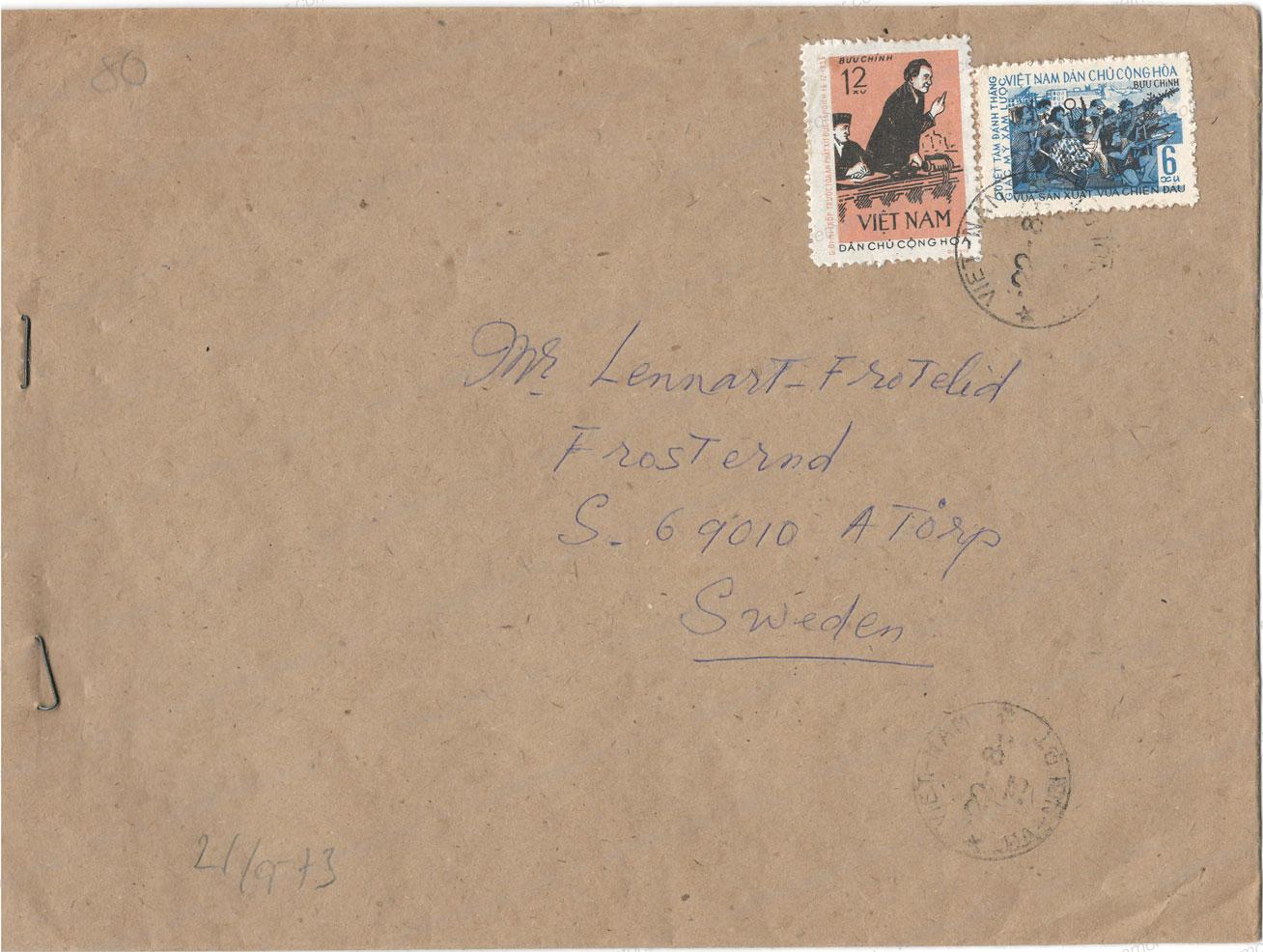
Mixed currency franking from June of 1967 using two of the old 150D Handicraft stamps (which were devalued by 1,000:1 on March 1st, 1959 and hence only worth 30xu) plus newer currency stamps for 22xu (including the 12 xu stamp of the 20. Revolution stamp) for an overall postage of 52xu. This was more than the standard 20g tariff demanded (12xu) so this letter must have been much heavier.
Mixed franking of the 1D Woschod stamp together with the 12xu Anniversary of the Revolution stamp for an overall postage of 1.12. The letter was mailed in December ion 1965 by Xunhasaba to a stamp dealer/collctor in Canada. Canada was a pretty rare destination in the mid 1960’s.
Mixed franking of the 50xu Geneva Agreement value together with the 12xu Anniversary of the Revolution stamp and the 12xu World Union stamp for an overall postage of 74xu on an air mail letter to Paris, France.
Mixed franking of the 12 xu Revolution stamps plus the 50 xu Engels stamp paying an overall postage of 74 xu on an international letter sent from Hai Phong to Switzerland in 1972. Hai-Phong transit cancel on the reverse.
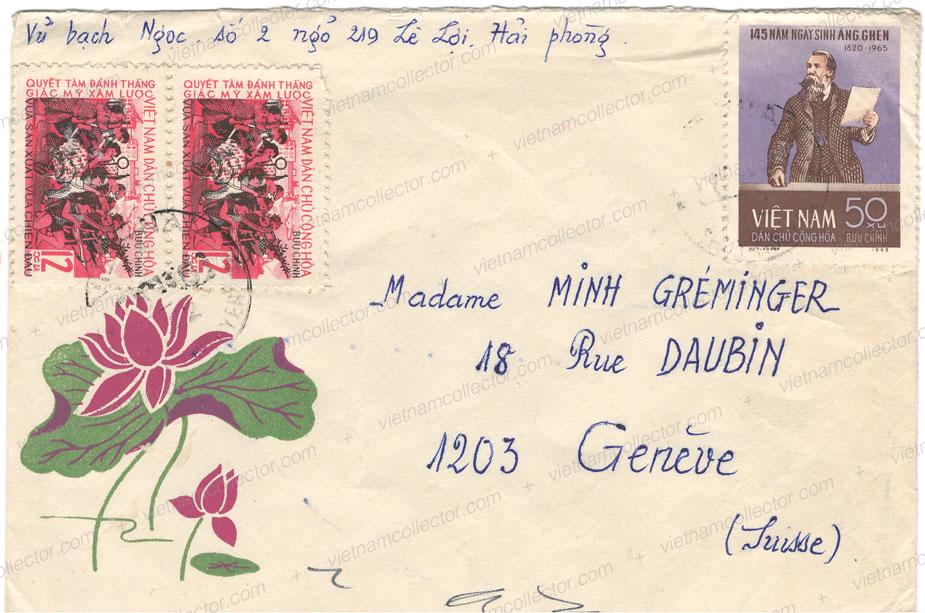
Registration Nr. 101130


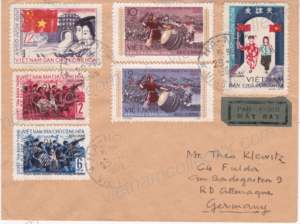
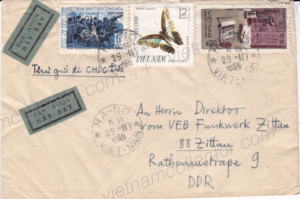
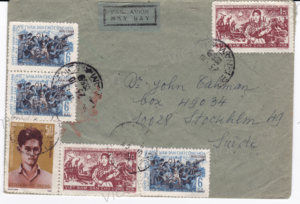
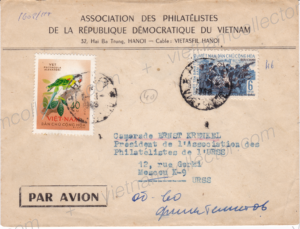
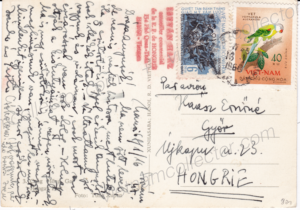
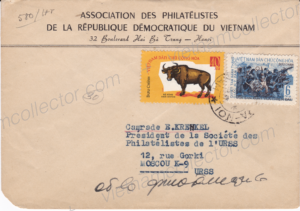
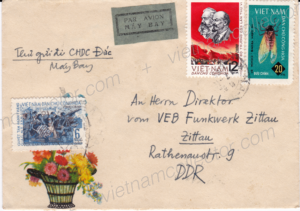
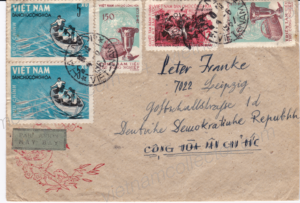
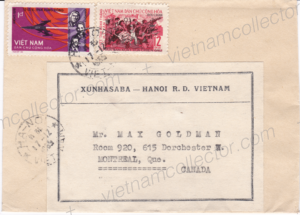
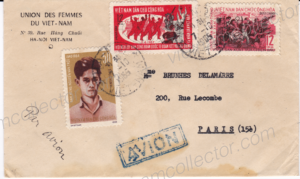
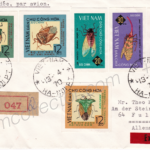
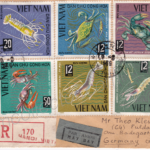


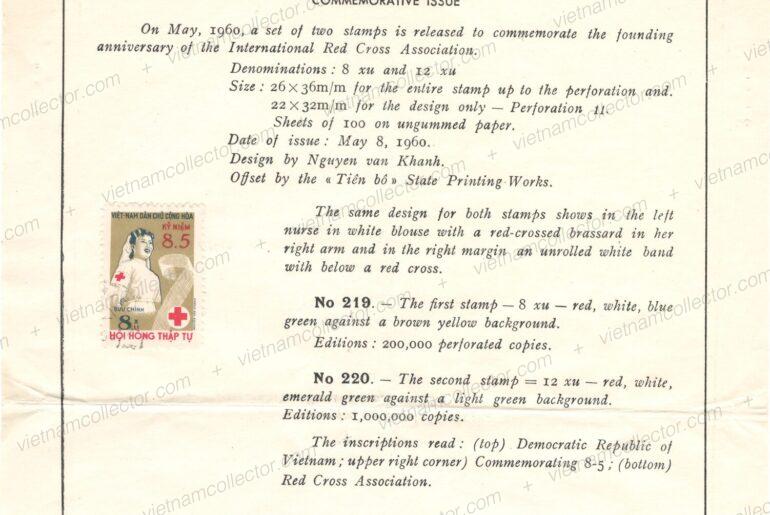
Comments are closed.